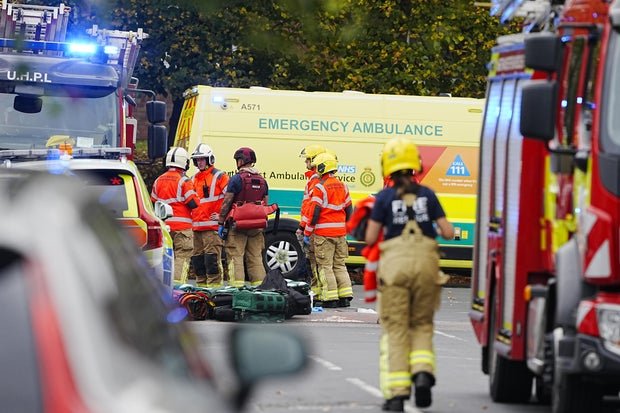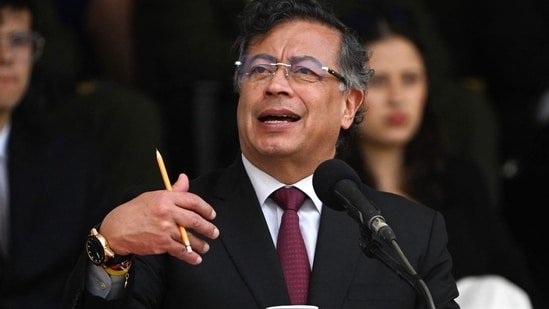Dutch military photos showed an F-35 stealth fighter sporting a fresh drone-shaped kill mark after the advanced jet was used to shoot down Russian drones that violated alliance airspace.
The images from the Netherlands’ defense ministry show the marking on the fuselage, just below the cockpit. The marking, not displayed on other F-35 fighter jets, distinctly resembles the triangular Delta-wing one-way attack drones Russia uses.
The Dutch Ministry of Defense told Business Insider that the marking was added “after taking out multiple drones in Polish Airspace in September.” It said the marking was only added to one F-35 that took out multiple drones, but it said that it was not disclosing anything about the number of kills.
Markings are added to jets to indicate victories. The tradition started in World War I with the emergence of military aviation and still continues today. American Super Hornets, for instance, were spotted last year with these kinds of markings during Red Sea operations against the Iran-backed Houthis.
Taking down cheap drones far below the kind of high-end hostile threats that the F-35 was built for has raised questions about sustainable defense. Meeting inexpensive threats with high-value platforms and munitions puts the defenders on the wrong side of the cost curve, making the development of low-cost defenses increasingly a priority.
Western aircraft, including Dutch F-35s, have been scrambled multiple times in response to Russian air assets operating in or near NATO airspace since its full-scale invasion of Ukraine began in February 2022. The incident over Poland, however, was the first time that NATO jets destroyed Russian aircraft within alliance airspace.
Facebook/Dutch Ministry of Defense
The F-35s were only a few days into their new patrol along NATO’s front — its border with Russia.
Russia said the drones were not in Poland intentionally but had veered off course. Poland’s defense minister categorically rejected the claim and instead said Russia had deliberately targeted its sovereign airspace.
Many Western leaders and defense officials called Russia’s actions a test of NATO’s air defenses, which is an area that the alliance has acknowledged is lacking. Many have also painted Russia’s actions in NATO as a test of the alliance’s resolve.
Through probing maneuvers, Russia is able to gather intelligence about NATO responses, identifying which systems react, from where, and how quickly.
Related stories

Business Insider tells the innovative stories you want to know

Business Insider tells the innovative stories you want to know
Other recent Russian violations of NATO airspace include three Russian MiG-31 jets that breached Estonian airspace for over 12 minutes a few days after the drone incident. NATO aircraft were scrambled to intercept and escort them, including Italian Air Force F-35 Lightning II stealth fighters. There were, however, no air-to-air engagements.
NATO has warned Russia to stop its provocative moves, but the alliance is walking a fine line when responding militarily. Though it doesn’t want to appear weak, it also doesn’t want to escalate.
NATO militaries, worried about Russia, have hugely increased their defense spending, including on air defenses, and are building stronger border defenses.
The Netherlands’ defense ministry said in a post that by having Dutch F-35s stationed in Poland, it was demonstrating its continued readiness. The ministry said its F-35 fighter jets will be in Poland from September 1 to December 1. Other allied nations have committed jets to Poland as part of ongoing air policing missions.
It also said that the Netherlands, starting in December, will also station combat systems like the US-made Patriot air defense system in Poland to strengthen air defenses as well as to protect what is a key logistics hub for support delivered to Ukraine.
The defense ministry said that Defense Minister Ruben Brekelmans visited the Dutch F-35 detachment, where he described NATO’s eastern border as also the Dutch security border.








